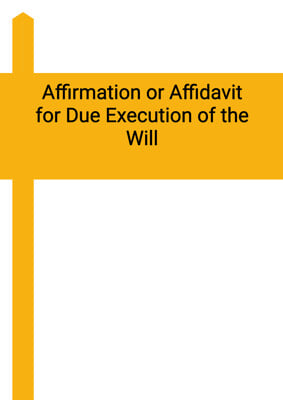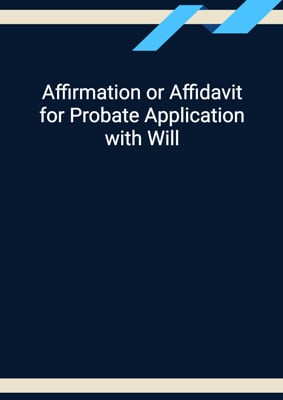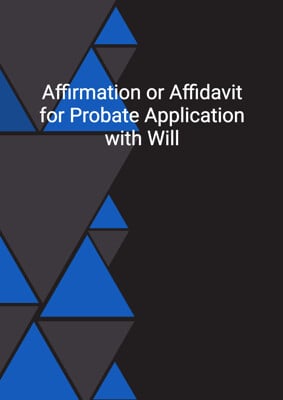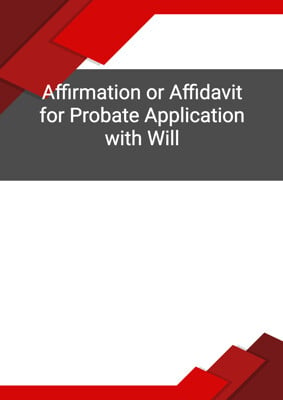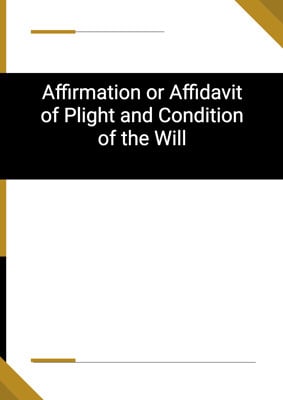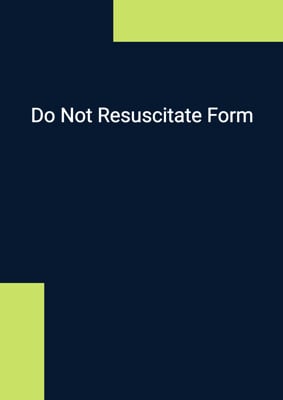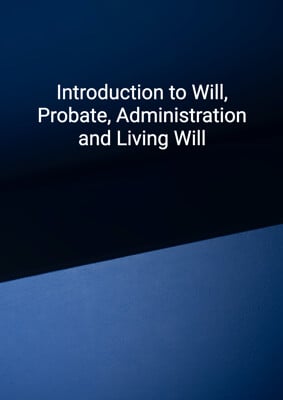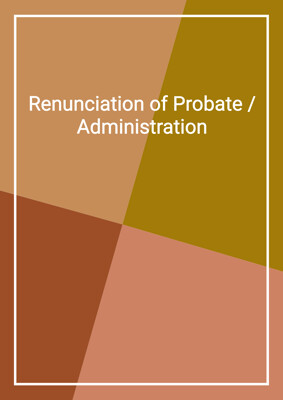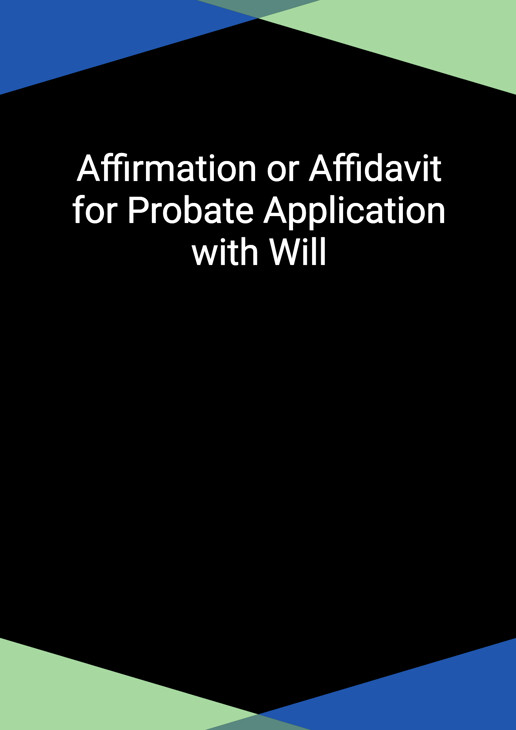
Affirmation or Affidavit for Probate Application with Will
No Executor Appointed
Affirmation / Affidavit by the witness under the Will on the due execution of the Will. The witness makes oath that the deceased did not name any residuary legatee or devisee holding in trust or for life for any other person in the Will.
How to Tailor the Document for Your Need?
01
Create Document
Fill in the details of the parties. You can click the "Fill with Member’s Information" button to complete it with information saved to your account.
02
Fill Information
Please fill in any additional information by following the step-by-step guide on the left hand side of the preview document and click the "Next" button.
03
Get Document
When you are done, click the "Get Document" button and you can download the document in Word or PDF format.
04
Review Document
The document should be signed by the authorised signatory (or directors of a company) and witnessed to complete the formality.
Document Preview
Document Description
The document titled 'Affirmation or Affidavit for Probate Application with Will' is an important legal document used in the court of domicile for probate applications with a will. The document starts with an introduction stating the court of domicile and the deceased's address. It then provides an option for the user to choose between an affirmation or an affidavit. The document contains several sections that cover various aspects of the probate application.
Section 1: Introduction
This section provides information about the deceased, including the place and date of death, as well as the age at the time of death. It also mentions that the deceased made and executed a last will.
Section 2: Domicile
This section states that the deceased died domiciled in a specific location and did not appoint an executor in the will.
Section 3: Beneficiaries
This section lists the beneficiaries named in the will, along with their current age or date of death if applicable.
Section 4: Residuary Legatee or Devisee
This section states that the deceased did not name any residuary legatee or devisee holding in trust for any other person in the will.
Section 5: Residuary Legatee or Devisee for Life
This section states that the deceased did not name any residuary legatee or devisee for life in the will.
Section 6: Alias (Optional)
This section is optional and only appears if the user provides an alias for the deceased. It explains that the deceased used an alias and clarifies that the different names refer to the same person.
Section 7: Estate (Optional)
This section is optional and only appears if the user indicates that there is an estate. It states that, to the best of the user's knowledge, there is no other property devolving to the personal representatives of the deceased, except for the ones listed in the estate duty commissioner's provisional schedule of property.
Section 8: Administering the Estate
This section expresses the user's belief that the paper writing provided contains the true and original last will of the deceased. It also states the user's commitment to administer the estate according to the law, provide an inventory of the estate, and render an account when required by law.
Section 9/10: Minority Interest
These sections are mutually exclusive and state whether a minority interest arises under the will or not.
Section 11/12: Life Interest
These sections are mutually exclusive and state whether a life interest arises under the will or not.
Section 13: Application for Letters of Administration
This section states that the user is applying as the sole residuary legatee and devisee named in the will for letters of administration (with the will annexed) of the estate of the deceased.
The document concludes with a signature and affirmation or oath by the user, depending on the chosen option.
How to use this document?
To use the 'Affirmation or Affidavit for Probate Application with Will' document, follow these steps:
1. Fill in the court of domicile and the deceased's address.
2. Choose between an affirmation or an affidavit.
3. Provide the necessary information about the deceased, including the place and date of death, as well as the age at the time of death.
4. Specify whether the deceased appointed an executor in the will.
5. List the beneficiaries named in the will, along with their current age or date of death if applicable.
6. Indicate whether the deceased named any residuary legatee or devisee holding in trust for any other person in the will.
7. Indicate whether the deceased named any residuary legatee or devisee for life in the will.
8. If applicable, provide an alias for the deceased and explain that the different names refer to the same person.
9. If applicable, state that there is no other property devolving to the personal representatives of the deceased, except for the ones listed in the estate duty commissioner's provisional schedule of property.
10. Express your belief that the paper writing provided contains the true and original last will of the deceased.
11. Commit to administering the estate according to the law, providing an inventory of the estate, and rendering an account when required by law.
12. If applicable, state whether a minority interest arises under the will.
13. If applicable, state whether a life interest arises under the will.
14. Sign the document and affirm or make an oath, depending on the chosen option.
Please note that this guidance is for informational purposes only and does not constitute legal advice. It is recommended to consult with a legal professional for specific guidance related to your situation.
Not the right document?
Don’t worry, we have thousands of documents for you to choose from:


